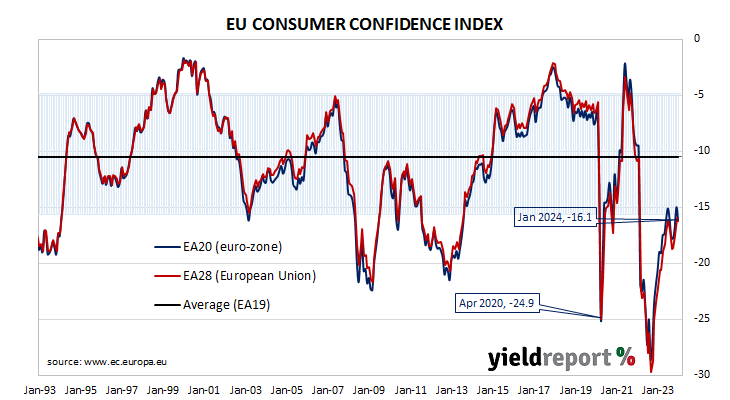Summary: Euro-zone household sentiment more pessimistic in January, index less than expected; consumer confidence index noticeably below long-term average; ANZ: fall partially negates gains since November; euro-zone bond yields rise.
EU consumer confidence plunged during the GFC and again in 2011/12 during the European debt crisis. After bouncing back through 2013 and 2014, it fell back significantly in late 2018 but only to a level which corresponds to significant optimism among households. Following the plunge which took place in April 2020, a recovery began a month later, with household confidence returning to above-average levels from March 2021. However, readings subsequent to early 2022 were extremely low by historical standards until recently.
Consumer confidence deteriorated in January according to the latest survey conducted by the European Commission. Its Consumer Confidence Indicator recorded a reading of -16.1, below the generally expected figure of -14.0 as well as December’s reading of -15.0. This latest reading is noticeably below the long-term average of -10.4 and below the lower end of the range in which “normal” readings usually occur.
“Consumer confidence across the euro area fell to -16.1 in January wiping out about a third of the gain made since November,” said ANZ senior economist Blair Chapman.
Sovereign bond yields in major euro-zone bond markets rose on the day. By the close of business, the German 10-year bund yield had gained 8bps to 2.34% while the French 10-year OAT yield finished 5bps higher at 2.84%.


